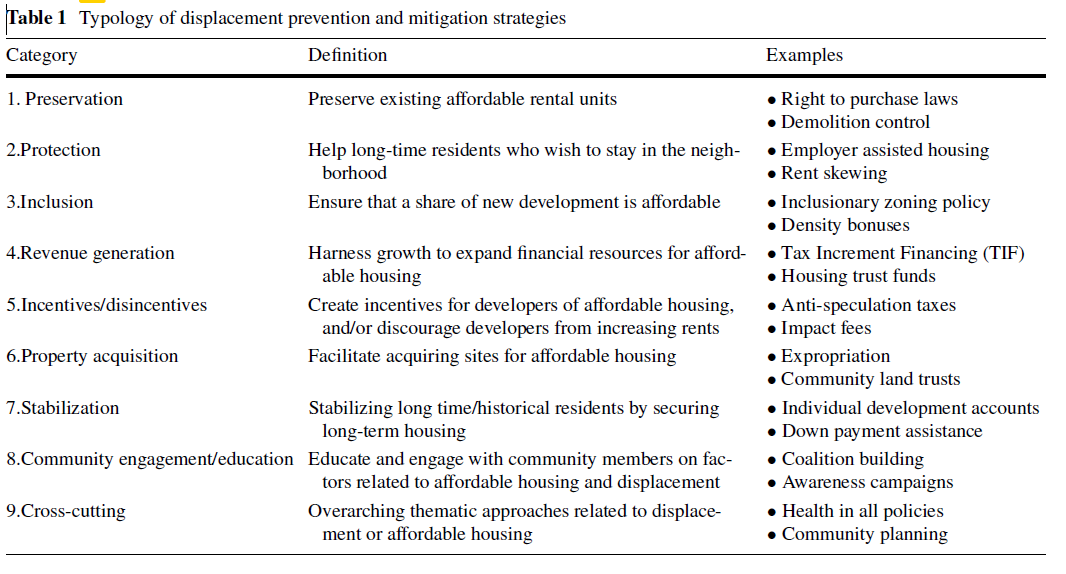Key takeaways:
- This study provides a comprehensive list of high-level, anti-displacement strategies and resources to support building healthy communities. This menu of strategies was produced in part to support public health practitioners helping communities advance healthy community design projects.
- Improvements in low-income communities to address walkability and improve access to parks and transit may lead to higher property costs and increased housing costs, displacing existing residents who do not reap the benefits of healthy community design.
- This article identifies 141 strategies for mitigating and preventing displacement. Strategies were grouped by the following topology: preservation, protection, inclusion, revenue generation, incentives/disincentives, property acquisition, stabilization of resources, community engagement/education, and cross-cutting policies that require cross-agency coordination.
- A single strategy alone is unlikely to prevent displacement. Rather, a combination of multiple strategies is required to ensure that residents can benefit from community investments that improve community health while assuring that they are not displaced because of these neighborhood improvements.
Community engagement and education is one of the categories of strategies. This strategy includes engaging low-income and communities of color in community planning processes and ensuring resident representation and participation. It also includes increasing knowledge about displacement and providing education on land use planning and policy-making to equip local residents and youth with how to influence those changes in their own

Implications:
- It is important to gain a deeper understanding of the advantages and drawbacks of modifying the built environment to promote physical activity in low-income communities. Improvements can lead to increased housing costs, and affordable housing strategies alone are insufficient to address displacement.
- The community impacted by the changes must have a voice to share their needs and visions for the neighborhood. Safe Routes to School practitioners can be important partners in supporting anti-displacement strategies by leveraging the core practice of community engagement. They can work collaboratively to engage families in community planning processes and increase awareness of how youth and local residents can be part of or influence decision-making for future projects.
Serrano, N., Realmuto, L., Graff, K.A., Hirsch, J.A., Andress, L., Sami, M.; Rose, K., Smith; A., Irani, K., McMahon, J., and Devlin, H.M. “Healthy Community Design, Anti-displacement, and Equity Strategies in the USA: A Scoping Review.” Journal of Urban Health, 100 (2022).
web resource

